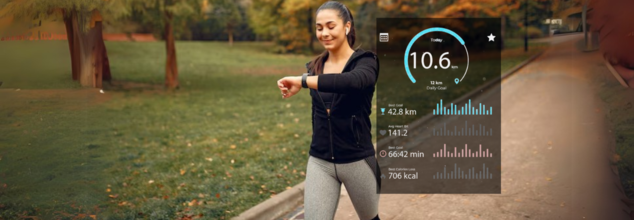- Health Conditions A-Z
- Health & Wellness
- Nutrition
- Fitness
- Health News
- Ayurveda
- Videos
- Medicine A-Z
- Parenting
- Web Stories
How To Move From Walking 5K Steps To 10K Steps Everyday?

If you've recently hit the milestone of finishing a 5K—whether via a program, a nearby parkrun, or on your own walking or running routine you may be left wondering what to do next. For most, the natural (and thrilling) step is to target a 10K but how do you do this safely and in a way that is sustainable? As a health editor at a leading international platform, I’m breaking down exactly what it takes—physically, mentally, and logistically to go from 5K to 10K in a way that protects your health and supports long-term fitness.
The step up from 5K to 10K isn't a fitness improvement—congratulations, it's a shift in attitude. Achievement of 5K is an impressive feat, particularly if you're new to habitual exercise. But continuing that momentum with the target of 10K offers a formalized means of remaining motivated and dedicated. It's the optimal balance of challenge and achievability.
What's special about going from 5K to 10K is that you aren't beginning from scratch. You've established the foundation: cardiovascular, fundamental running or walking technique, and a habit of including regular exercise in your routine. The process of getting to 10K is no longer about whether you can do it, but how to do it correctly.
Are You Ready to Double Your Distance?
Before you tie up for longer runs or walks, have a quick scan of your current lifestyle, recovery potential, and frame of mind. Utilize the 1–5 scale as a self-testing tool:
Work-Life Balance: Is your lifestyle balanced enough to provide time for more activity?
Physical Readiness: Are you free from pain, or do you have persistent niggles after activity?
5K Journey Experience: Did you find the journey to 5K enjoyable, or was it hard work?
Time Availability: Can you reasonably schedule 15–30 extra minutes on most days to exercise?
If you're rating 3 or higher on most of these, you're well set to think about progressing towards 10K. Otherwise, think about sticking with your 5K distance for another few weeks while overcoming any obstacles before progressing further.
There isn't a blanket timeline for everyone to transition from 5K to 10K. Some individuals may be okay trying to make the switch within four weeks, but others will be helped by an 8–10 week build. Patience is the most important thing. Hasting the process will result in burnout or injury.
Rather than concentrating exclusively on speed or rate, turn your thinking to "time on feet." Gradually add 5–10 minutes to your walks or runs each week, giving your body time to adjust to the added burden.
Why Easy Pace Matters Most?
One of the biggest errors individuals commit when increasing distance is racing too hard too soon. The 10K distance is not about high-speed performance so much as it is about endurance at a steady pace. For that reason, easy miles—those run at or below conversational pace—are the foundation of any 10K training.
Walking or running steadily at a leisurely pace teaches your cardiovascular system to work longer, enhances fat burning, and acclimatizes your muscles without overdoing it.
Add Variety Without Overcomplication
While you're striving for 10K, adding little bursts of variety can enhance your progress without overloading your routine. That's where Fartlek-style training is useful. A Swedish word that means "speed play," Fartlek is about switching between faster and slower intervals on your walk or jog.
Here's how: Walk rapidly for one block, followed by the next at a slower pace. This is what strengthens your cardiovascular ability and what makes your sessions more interesting.
But keep in mind, these efforts need to still feel accessible. Most of your training should still remain focused on consistent, easy movement.
Consistency Wins
Whether your aim is health, weight loss, stress relief, or increased stamina, nothing beats consistency. Recording three to five sessions per week, even if brief, beats infrequent long walk/runs and rest days off due to exhaustion.
Creating a rhythm that works with your energy and lifestyle is more relevant than achieving a certain amount of kilometers per week.
How to Avoid Burnout?
The higher your distance, the more demands are placed on your body. That's why adding low-impact cross-training activities such as swimming, cycling, or yoga can be a lifesaver. These complement your cardiovascular development without loading up on the same muscle groups, minimizing overuse injuries.
On days when you’re not walking or running, opt for 30–45 minutes of cross-training to maintain momentum and prevent fatigue.
Nutrition plays a subtle but critical role in supporting your goal. Aiming for a 10K means your body will need more fuel—especially from complex carbohydrates, lean proteins, and plenty of hydration. Don’t overlook rest either: sleep and active recovery days help your muscles rebuild and prepare for longer efforts.
If you experience strange soreness, chronic fatigue, or a decrease in drive, take it as a sign to take it easy—not try harder.
The transition from 5K to 10K is more than a physical accomplishment—it's a change of attitude, lifestyle, and self-assurance. If you approach it correctly i.e., with a mix of ambition and practicality, you can make this next step a new norm. Break the journey into manageable chunks, adapt to circumstances, and keep in mind: progress, not perfection, is how you reach the finish line.
Whether you do your 10K in one sit, do it in sessions throughout the day, or interspersed with breaks for a walk, you're making a great investment in your overall long-term health.
Fixing Your Posture Is More Than Just Sitting Straight – Yoga Poses That Benefit Your Spinal Health

(Credit-Canva)
Fixing your posture is about more than just sitting up straight. Specific yoga poses can really help your back and make your spine healthier. These poses gently stretch and make the muscles that support your spine stronger. This leads to better alignment, less pain, and easier movement over time.
The reason why people who have poor posture are encouraged to do yoga is because it allows your core muscles to grow stronger and when you have a strong core your body finds it much more easier to support your back. Yoga also makes you more flexible, so your back can bend and twist more easily. Plus, it improves your body awareness. This means you'll notice how your body feels and holds itself, helping you to correct your posture before you even start to slouch.
Yoga Poses That Help You Fix Your Posture
Fixing your posture is about more than just sitting up straight. Specific yoga poses can really help your back and make your spine healthier. These poses gently stretch and make the muscles that support your spine stronger. This leads to better alignment, less pain, and easier movement over time.
Cow Pose (Bitilasana)
This gentle pose helps your spine move more freely by arching your back. It stretches your stomach and neck, making your spine more flexible and ready for other movements.
Downward-Facing Dog (Adho Mukha Svanasana)
This basic yoga pose makes your whole spine longer, from your tailbone to the top of your head. It stretches your legs and strengthens your arms, taking pressure off your back and helping your whole body line up correctly.
Plank Pose
Plank is fantastic for building a strong core, which is super important for a healthy spine. It works your stomach, back, and shoulder muscles, teaching your body to stay straight and preventing slouching by making you more stable.
Sphinx Pose
This easy backbend gently curves your spine, which is good if you sit a lot. You lie on your belly and lean on your forearms. Sphinx opens your chest and strengthens your lower back, helping your spine keep its natural curve and reducing stiffness.
Cobra Pose (Bhujangasana)
Cobra is a deeper backbend than Sphinx, making your whole back stronger and more flexible. When you lift your chest using your back muscles, it stretches your chest and stomach, improving how your spine moves.
Seated Twist
Seated twists gently turn your spine, making it more flexible and releasing tightness. This pose helps your insides and stretches your back muscles, keeping your spine hydrated and mobile, and improving posture by balancing your muscles.
Cat Pose (Marjaryasana)
Often done with Cow Pose, Cat Pose gently rounds your spine, stretching your back and releasing tension. It improves spinal flexibility and coordination, helping to warm up the back muscles and improve overall spinal mobility.
Child's Pose (Balasana)
This restful pose gently stretches the lower back and hips, decompressing the spine. It calms the mind and body, providing a gentle release for spinal tension and encouraging relaxation, which can greatly benefit overall back health.
Bridge Pose (Setu Bandhasana)
This pose strengthens the back muscles, glutes, and hamstrings while opening the chest and shoulders. It helps to lengthen the spine, counteracting the hunching often seen with desk work, and improves overall spinal support and posture.
Want To Exercise More Tomorrow? How A Simple Bedtime Routine Can Boost Physical Activity By 30 Minutes

Credits: Canva
For most people (add me!), the daily struggle to fit more exercise into an already hectic routine is a battle against fatigue, motivation, and not least of all, time but strangely the answer lies not in trying to find that ideal workout or buying new running shoes? A significant new study, suggests that a simple change to your bedtimes—going to bed earlier, that is—may hold the key to a more active lifestyle.
The study, released by Monash University scientists in Australia, examined the connection between bedtime and exercise. Although it does not unquestionably prove that an early night leads to more exercise the next day, the results strongly indicate a connection. The scientists analyzed wearable information from close to 20,000 individuals over the span of a year, creating a wealthy dataset that contained nearly six million night-and-day time stamps.
Their key discovery: people who went to bed earlier tended to engage in more moderate-to-vigorous physical activity the following day. Those who hit the hay at 9 p.m. clocked in an average of 30 more minutes of exercise the next day than those who went to bed at 1 a.m. Even an 11 p.m. bedtime, which was the average among participants, resulted in 15 fewer minutes of movement compared to the early birds.
Why Earlier Bedtime May Lead to More Exercise?
The relationship between sleep timing and exercise is more involved than just getting extra sleep. The research revealed that even if individuals had their typical level of sleep, sleeping earlier than usual still increased physical activity the following day. What this implies is that sleep timing, rather than duration, has an independent contribution in the regulation of our energy and motivation towards exercise.
Psychologist Josh Leota, a lead researcher, thinks that this finding might provide a straightforward but potent public health message. "Instead of pushing for sleep and activity separately, campaigns might push for earlier bedtimes to promote more active lives naturally," he explained.
The reasons are both physiological and behavioral. Late sleepers may naturally be more fatigued during the day or experience what researchers call “social jet lag”—a mismatch between biological rhythms and social schedules like a 9-to-5 job. This can reduce not only sleep quality but also daytime energy and motivation, ultimately impacting one’s willingness to exercise.
Strangely enough, people who went to sleep earlier but still slept for the same number of hours that they usually do tended to achieve personal records for their levels of physical activity. This indicates that it's not only about sleeping more—about when you sleep.
Why would earlier bedtimes lead us to be more likely to get moving? The researchers suggest a few reasons:
Less social jetlag: Most individuals' internal sleep clocks ("chronotypes") don't fit typical 9-to-5 routines, creating "social jetlag"—a discrepancy between internal and external schedules. This may result in more disturbed sleep and more daytime sleepiness, draining energy for exercise.
Less late-night distraction: Late-night activity usually translates into more computer/TV time and less time for restorative sleep, which leaves individuals drowsy and less motivated to exercise.
More regular wake times: While the study did not specifically quantify wake-up times, having an earlier bedtime may naturally result in waking up sooner and feeling more alert, with a greater chance of squeezing in exercise before the demands of the day can fill the schedule.
Interestingly, the research also discovered that individuals who slept for an average of five hours recorded 41.5 more minutes of exercise than those who slept for an average of nine hours. This does not, however, indicate that a shorter sleep period is more conducive to fitness. Prolonged lack of sleep can disable the gains of exercise, raise injury risk, and harm overall health. Strive for a healthy equilibrium: sufficient sleep for recovery, but not a quantity so high that it pushes out time and energy for activity.
How to Make Earlier Bedtimes a Part of Your Routine?
So, how do you take this research and turn it into action? If you're motivated to attempt changing your bedtime, here are some real-world strategies to make the transition smoother and prepare yourself for more energetic days:
1. Wind Down Slowly: Begin by creating a "digital sunset" 30 to 60 minutes prior to your desired bedtime. Switch off screens and dim the lights to signal your body that it is time to sleep.
2. Develop a Sleep Ritual: Read, meditate, or do some light stretches. This signals to your body that it's time to unwind.
3. Adjust in Increments: You don't need to transform your schedule in one night. Start by going to bed 15 minutes early every night until you hit your target bedtime.
4. Align with Your Chronotype: We all have an innate circadian rhythm. Although this study indicates advantages from sleeping earlier, adjust your bedtime to suit your body's natural schedule without sacrificing sleep quality.
5. Prioritize Sleep Hygiene: Make your bedroom cold, dark, and silent. Invest in blackout curtains, white noise machines, or whatever will let you sleep better.
6. Keep Consistency: Attempt to keep the same wake and sleep times even on weekends to maintain a stable rhythm.
While the best exercise regimen or the latest piece of exercise equipment can be beneficial, at times the most effective changes are the most straightforward. This research indicates that shifting your bedtime forward—even by one hour—may make you more active, energized, and eager to work out the following day.
Health On Your Fingertips - Your Fingers Can Reveal How Much Endurance You Have

(Credit-Canva)
We have all seen people who are naturally good at any sport they pick. While anyone can practice sports and get better, there is a question of whether the other people who play better are ‘gifted’ or are they doing things differently. The answer could be both! There are certain people who are naturally better at sports, and research has shown that there is a simple sign that may indicate the same.
Take a look at your hand right now. Is your ring finger longer than your pointer (or index) finger? If it is, new research suggests you might have a natural gift for sports. Published in the American Journal of Human Biology, the study looked at many smaller studies, found that people whose pointer fingers are shorter than their ring fingers (this is called a lower 2D:4D digit ratio) tend to have better endurance and exercise tolerance tougher and longer workouts better.
This research is thought to be the most complete study so far that connects finger length to how well people can exercise and perform in endurance activities. One expert from the study explained that if you have this lower digit ratio, you're more likely to do well in sports that need a lot of stamina, like long-distance running, biking, rowing, or team sports that require a lot of energy. This finger ratio could even be a cheap and easy way to check someone's basic heart and lung fitness.
Study Found About Fitness and Finger Length
The researchers looked at 22 different studies that included over 5,000 people from 12 countries. They specifically checked how the lengths of people's pointer (2D) and ring (4D) fingers were related to how fit their heart and lungs were. This included how well their bodies used oxygen during hard exercise and how long they could work out before getting tired.
The results showed that people with a lower 2D:4D ratio (meaning their pointer finger was shorter than their ring finger) had better exercise tolerance and could keep going longer. However, this finger ratio didn't seem to be linked to other athletic abilities, like how much oxygen their body could use overall.
Can Finger Length Predict Other Things About Your Health?
Other studies have also connected finger length ratios to different traits, like being more physically aggressive or more competitive. The lower 2D:4D ratio has also been linked, though not strongly, to other signs of being good at sports, such as having a stronger grip, being able to sprint faster, and having more explosive power. Some research suggests this link is stronger in men and in sports that need a lot of stamina or sudden bursts of power.
A few studies have even found that people with lower 2D:4D ratios have bigger jumps in the hormone testosterone during tough exercise, which might help them deal with discomfort. Also, top athletes often have lower 2D:4D ratios than people who aren't athletes. However, experts point out that this isn't true for every sport, and the effect is usually small.
Other scientists, however, question how much finger length really matters in sports. They believe it's unlikely that finger size can truly predict someone's ability to endure. Most of the research on finger ratios has only shown connections, not direct causes. More studies are needed to clearly understand why these links exist and if they have any real use in finding talent or in athletic training.
What definitely does improve your fitness, according to experts? Training. Regular exercise, both cardio and strength training, can hugely improve your heart and lung fitness. It's much more likely that your training will affect your performance than your finger length.
© 2024 Bennett, Coleman & Company Limited

